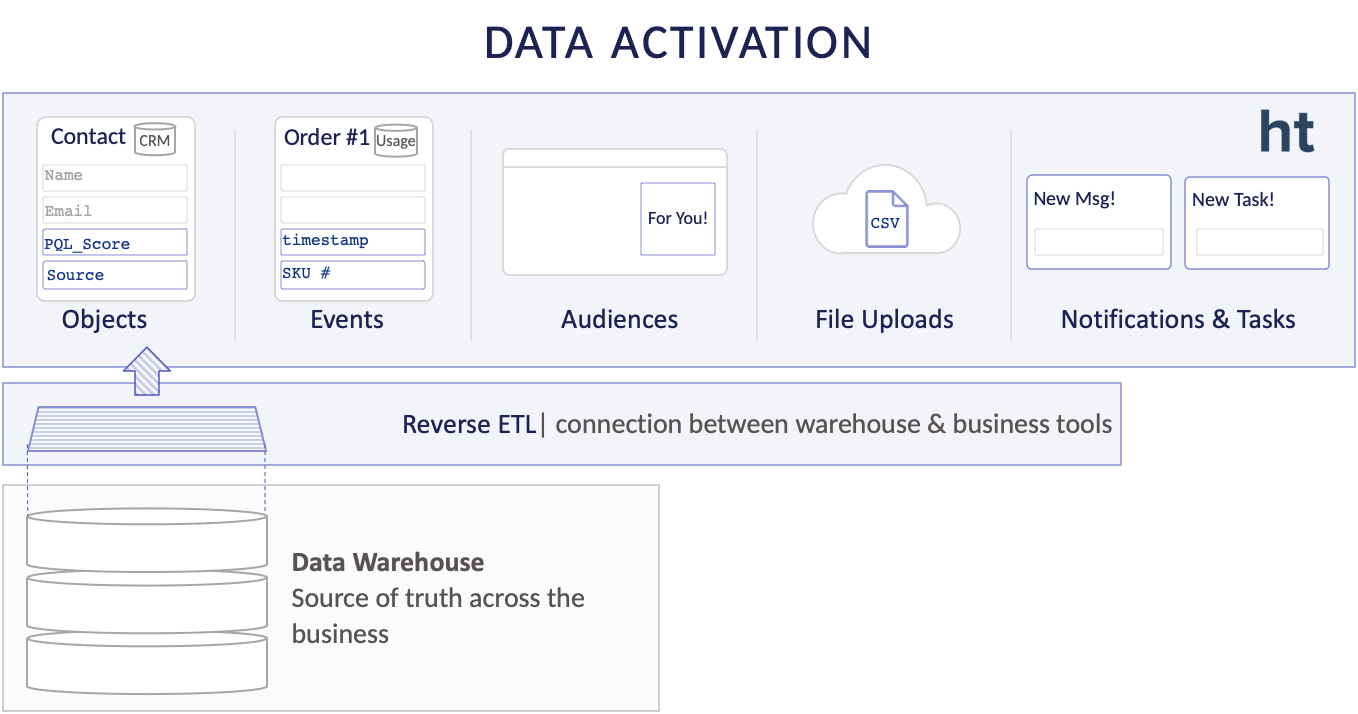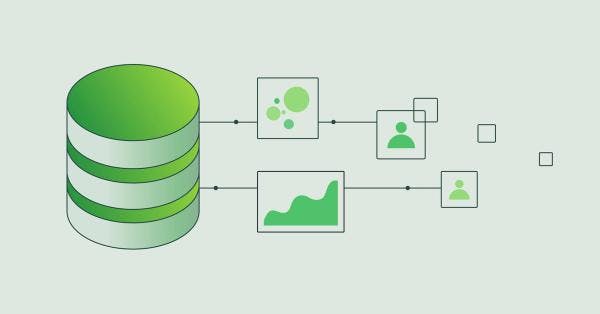Data Activation: The Next Step After Analytics
Analytics & BI aren't enough: learn why you need to focus on data activation to help everyone take action on their data

Pedram Navid
April 13, 2022
7 minutes

It’s been a long-time dream of data teams to be able to measure the impact of their work. Data teams don’t want to be measured by the number of tables they create, or by how many reports they send; they want real impact. Data Activation is how data teams can get there, by directly tying the work they do to real business outcomes.
Data Activation is all about unblocking data teams, enabling business teams, and giving both the right model to think about how to take action with their data.
From Big Data to the Modern Data Stack
We all remember when Big Data trended as the hottest topic across industries, but we’ve since offloaded the technical details of managing large volumes of data to vendors who can optimize for them. As data teams, we’re no longer concerned about how to move big data across multiple systems. Instead, we’re now focused on a much more difficult problem: business complexity.
Data warehouses no longer require constant maintenance; tools like Fivetran simplified data ingestion, Snowplow unified data creation, and dbt revolutionized data transformation. With these tools, the data warehouse has become the central hub of a data team's work. More companies than ever can operate and provide access to a full-fledged data warehouse, even with just a few employees. It’s hard to believe that up until very recently these tasks required an entire engineering team to achieve the same outcome.
The adoption of the Modern Data Stack unlocks massive potential for data teams everywhere: better tools and software empower data teams to spend less time building and maintaining data systems, and more time delivering value to their organization.
These tools have made it easier to circumvent the technology problem, and with that, we’ve seen a new challenge emerge. The complexity of a business has continued to increase, as demand for more personalized data has grown among every business function.
- Marketing teams want to build sophisticated audiences daily to create custom ad campaigns based on immediate trends.
- Sales teams want to empower their account executives with relevant product data to help make conversations more effective.
- Customer success teams want to find ways to scale their functions in a way that’s responsive to user interactions.
- Data teams are caught trying to balance and juggle between these competing demands for their time.
The Modern Data Stack: New Opportunities & New Challenges
This increased focus on understanding the business through the data warehouse has led to an increase in the pace of model development. This is a positive development, of course, but it also gives rise to new challenges for data teams.
The first challenge is technical: until now, data in the warehouse largely served business intelligence purposes, such as creating reports and dashboards. But in today’s marketplace, business teams want to–and must do–more with their data. Beyond analyzing it, business teams need this data delivered to the tools they use every day so they can take action on it. Integrating with those systems is notoriously difficult. Due to the finicky and often-changing nature of these third-party SaaS tools, the data pipelines are inevitably brittle and difficult to maintain.
The second challenge centers around organization and people. There’s this persistent myth that data work is a pure form of mathematical truth-seeking. The reality is that data practitioners aren't truth-seekers; they’re mediators in a political battle–with jobs, status, and dollars on the line. This role as a mediator becomes even more obvious as data teams begin to interact more broadly with the organization, trying to untangle the myriad ways in which teams want to extract value that the data team provides.
The Hidden Value in Complexity
While these issues are real, they also present an opportunity. Data teams often ask how they can justify moving away from a workflow consisting largely of servicing teams via tickets, and towards the core of a business where they can make a measurable impact on value? Can data teams formulate meaningful goals and metrics, ones that go beyond the artifacts they build to answer questions?
The answer to this lies in the very challenges they face. There’s no role better suited to helping an organization really deliver value with data than data teams. If the complexity can be managed, then data teams can directly tie their work to the outcomes they help enable.
Generating reporting and BI is a step in the right direction, but it isn’t the final destination. We’re seeing this already with tools like Hex, which evangelizes the dissemination of knowledge as the “next step beyond reporting.” As sales, marketing, finance, ops, and other business teams start to see the value created in the warehouse, they, too, want to go beyond just reporting. They want to get the data into their tools, and they also want to take action on that data. They’re after a higher-level goal–and that is what we’re calling Data Activation.
Data Activation: Centering Data Across the Org
Data Activation is the method of unlocking the knowledge sorted within your data warehouse, and making it actionable by your business users in the end tools that they use every day. In doing so, Data Activation helps bring data people toward the center of the business, directly tying their work to business outcomes.
We’ve seen many ideas about how a data team’s work should be measured, but they’ve all either focused on activities over outcomes (the tables, reports, and models they created) or on the immeasurable (for example, how quickly they enable others to make decisions).
What if, instead, we measured data teams through their contribution to tangible business outcomes?
What if the data team built a model that could send additional product usage data into a marketing platform to personalize emails? You could measure the increase in reply-rate and click-rates, and tie that directly to the data team’s work.
With Data Activation, data teams reduce the time it takes to ingest data into ad campaign platforms, by automating parts of the stack – allowing for faster delivery of insights.
Data Activation can also prioritize incoming leads and sync lead scores directly within the sales team’s CRM, improving conversions and close rates.
With Data Activation, data teams can finally start to see the value of their work tied directly to discernible outcomes.
The Future of Data Activation
To be clear, Data Activation isn’t anything new, and we didn’t invent it. Data teams started activating data via in-house scripts long before Reverse ETL was a term. But with the advent of Reverse ETL platforms, we’re seeing rapid adoption of this type of work. A growing number of data teams are unlocking the value of the data in their warehouse via Data Activation—empowering stakeholders with the contextualized, critical data needed to propel the business forward.
Data Activation will be the next standard piece of every data team ever - up there with Data Analytics. Without Data Activation, the only tools data teams have to actually serve the rest of their business teams are Data Analytics or BI tools. Many of these analytics tools claim to be self-service, but in most organizations that turns out to be a failed promise. The next step is for every data team to have a Data Activation platform so that they can serve insights to the business teams, right where those teams live.
Reverse ETL itself is just one way in which data teams can perform Data Activation. We’re also busy creating additional ways of unlocking the power of your data warehouse. For example, our recently-launched Hightouch Notify allows data teams to proactively push insights to their users through messaging platforms like Slack.

With Data Activation, business teams can continue to focus on using their contextual knowledge to drive business decisions, and data teams can build the right frameworks and guardrails to make it easy for business teams to accomplish their goals. Data Activation makes this possible, and Reverse ETL was just the first step on this path. We’re excited about what this new future looks like for data teams. We hope you’ll join us on the journey.
If you’re excited about Data Activation, read part 2 → Hightouch’s vision to be the Data Activation Platform For Every Team.






